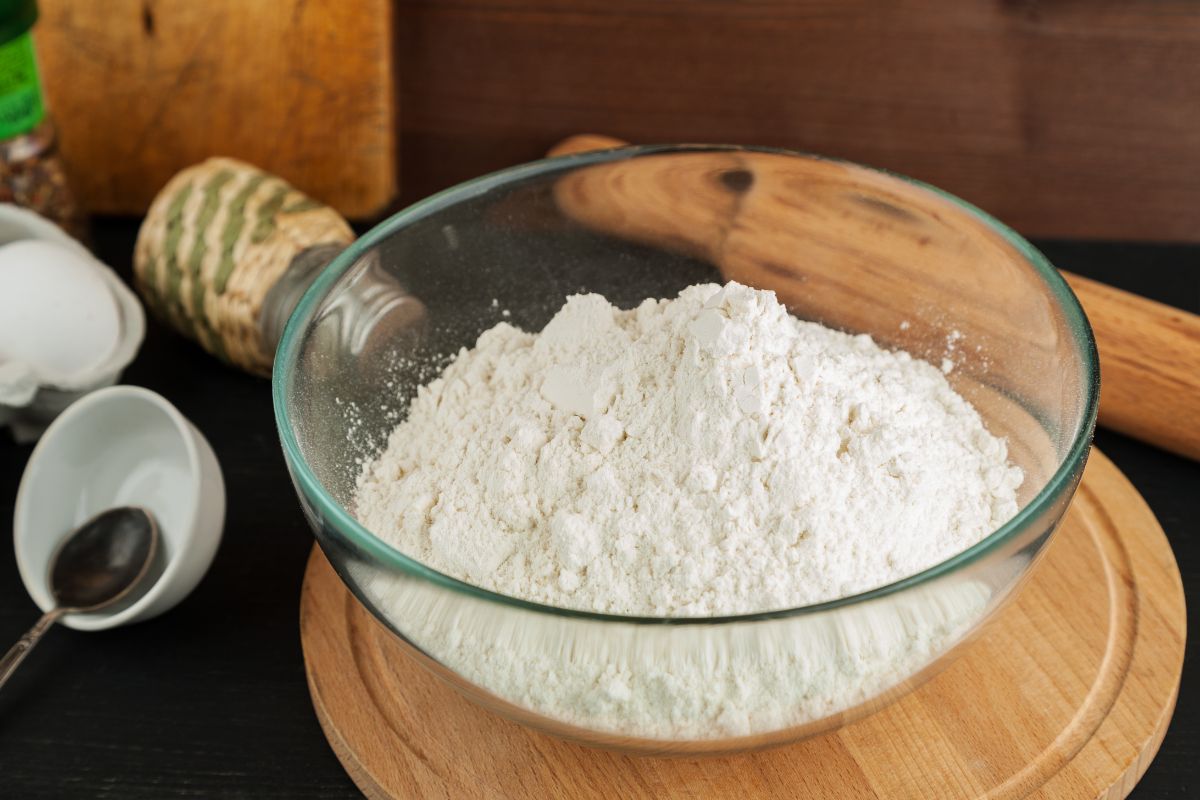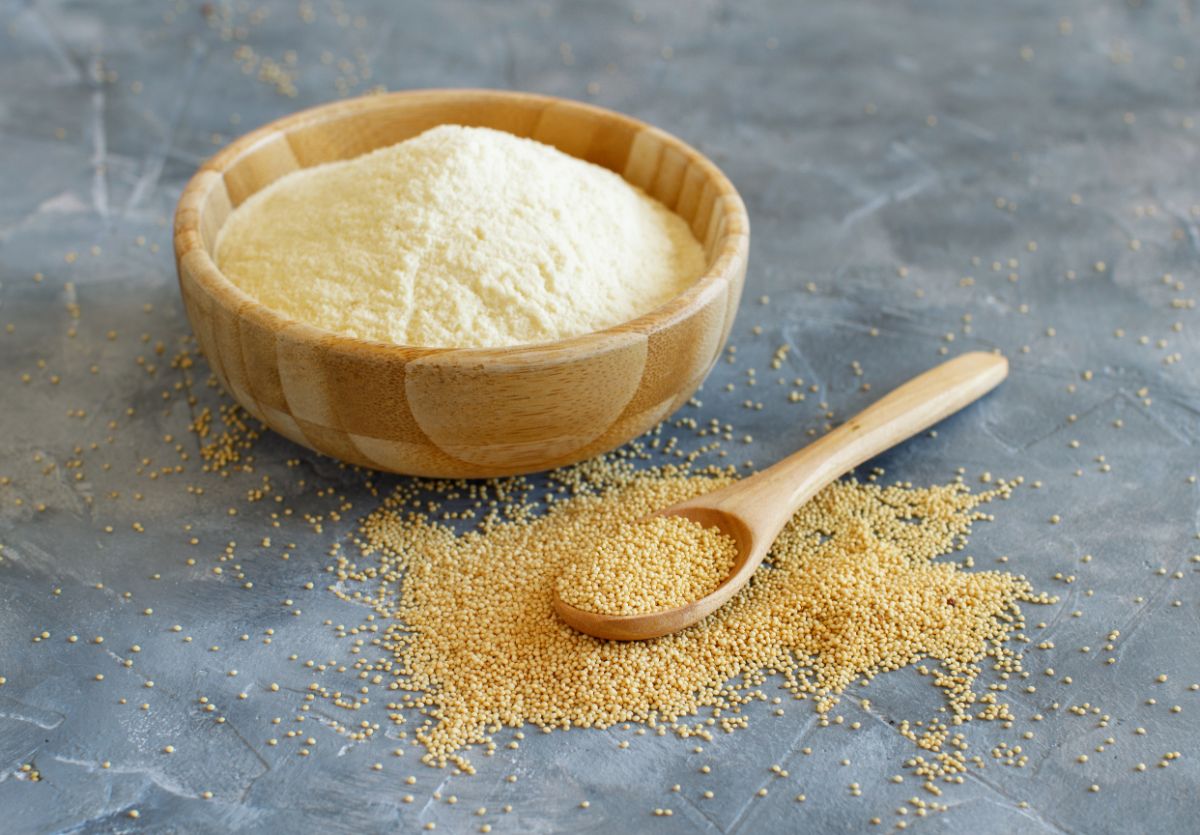There are a wide variety of flours in the stores today. Some are just a nominal source of fiber while others are full of protein and gluten content. What to use depends on the requirements in your baking recipe.

In the wheat family, there are different types of flours as well. Some have fine texture courtesy of intense grinding of the grains, while some are coarse. Depending on the type of pantry treat you are after, the texture, gluten content and components of the flour vary a bunch.
The most common types of flours that you can use during the baking process include all-purpose, self-rising, regular bread flour, gluten-free flours, and whole-grain flours. In this list, only self-rising flour comes ready with its leavening agent i.e. the baking powder.
Since baking is a science that relies on the reaction between the individual ingredients, you cannot use yeast in a recipe that calls self-rising flour. By adding yeast, you will be using two leaveners at once hence leading to foul smell, flavor, and substandard quality goods.
It is worth noting that baker’s yeast is added during the process of baking. Depending on the recipe, this can be during the opening stage or at the later stages.
Therefore, the remaining types of flours do not come with yeast as a component. They do not contain yeast in the first place. They only require it during the mixing or kneading stage for leavening in yeast-leavened pantry treats.
You even have the option of choosing baking powder or baking soda over yeast where you do not have taste for a yeasty dough. Or, where you want to achieve convenient baking through chemical leavening.
Do quick baking flours have yeast?
Yeast leavening is quite intimidating and demanding. It consumes a lot of time that in most cases may not be available. You need to allow the dough to rise at least three times and proof before finally baking it.
To save time, many bakers prefer quick baking since it is not sweat-breaking and requires a little time. It is a jam where you want to make finished products such as muffins, waffles, scones, pancakes, and coffee cakes.
Excellently baked quick-breads are products of chemical leavening. As a result, you must use only those types of flour that work best with chemical leaveners. You can use either baking powder or soda. How you do the mixing also matters a lot.
By going the chemical leavening way, you must stay away from yeast. In short, the flour used should be yeast-free. And, of course, with low or no gluten content.
But look, there are some other things to consider when choosing an ideal flour to work with. Sometimes you will want a gravy sauce or a thickener.
Sometimes it can be the denser or lighter treats. It all depends on the mood and the type of meal you are after. Rice or almond flour works best for denser and sweet-tasting treats.
Corn flour with baking powder is ideal as an excellent thickening agent with good taste in sauces and soups. Some other types of flours that bake best with baking powder or soda include all-purpose flours and all gluten-free flours (almond flour, buckwheat flour, amaranth flour, arrowroot flour, oat flour, teff flour, coconut flour, tapioca flour, cassava, and tiger nut flour)
Advantages of using gluten-free flours

With cases such as gluten intolerance and high-carb diet minimizations, many people are opting for gluten-free flours. Some of the best recipes that adore the use of this type of flour include bread, desserts, sauces, and noodles.
The previously mentioned flours come in different textures and tastes and with a variety of nutrients. Here are some of the reasons why you need to try pit these types of flours.
1. Improving the body’s cholesterol level
Other than genetic factors, body cholesterol levels can shoot due to too much intake of saturated fat and dietary cholesterol. Saturated fats play a bigger role. Baking flours are made up of refined pieces of whole grains.
Non-gluten grains contain a higher percentage of fibers and phytochemicals. These two elements help in minimizing the consumer’s body cholesterol level.
Grain varieties such as amaranth, millet, wild and brown rice, and quinoa are rich in the two elements. They are the best to go for where you find it tough to maintain your cholesterol level.
2. Promotes digestive health
Celiac disease is a monster when it comes to digestive health. It is a result of being sensitive to gluten content.
Major symptoms of celiac disease include bloating, nausea, poor appetite, and stomach pain. Unlike most diseases, celiac is a long-term disease with devastating effects if not well maintained.
One of the healthier ways of managing the celiac disease is through eating gluten-free products.
These include baked treats such as pasta and bread that are made with grains such as arrowroot, flax, chia, millet, and quinoa. These products are rich in probiotics, digestive enzymes, omega-3, and strands of fiber.
3. Minimize risks to contemporary diseases
Regular intake of gluten is linked with risks to contemporary diseases such as cancer, diabetes, heart disease, and cancer.
Gluten contents are high in carbohydrates since they primarily come from grains.
High carbohydrates often raise the blood sugar level. This is the reason why most people that eat high carbs often suffer heart diseases and stroke.
Secondly, gluten often comes with high fiber content. As a result, it helps in fighting some types of carcinogenic cells. However, for people with celiac disease, gluten is a potential risk of intestinal and colorectal cancer.
This is the reason your doctor will advise you to stay away from wheat, rye, triticale, and barley upon diagnosis of celiac disease.
Conclusion
Since pantry products are part of us, eliminating yeast in your baking flour is a bigger milestone than taking control of your body’s yeast level.
And, since yeast attaches to some of the sugary products that you ingest daily, it is prudent to avoid sugary products when diagnosed with a yeast infection.
With non-gluten and self-sing flours, you can permanently eliminate or substitute yeast in all your baking recipes.
